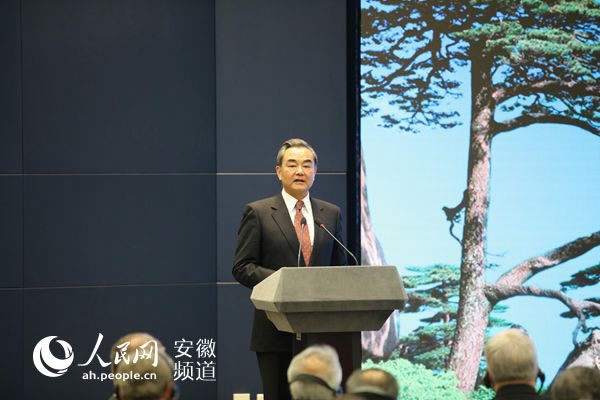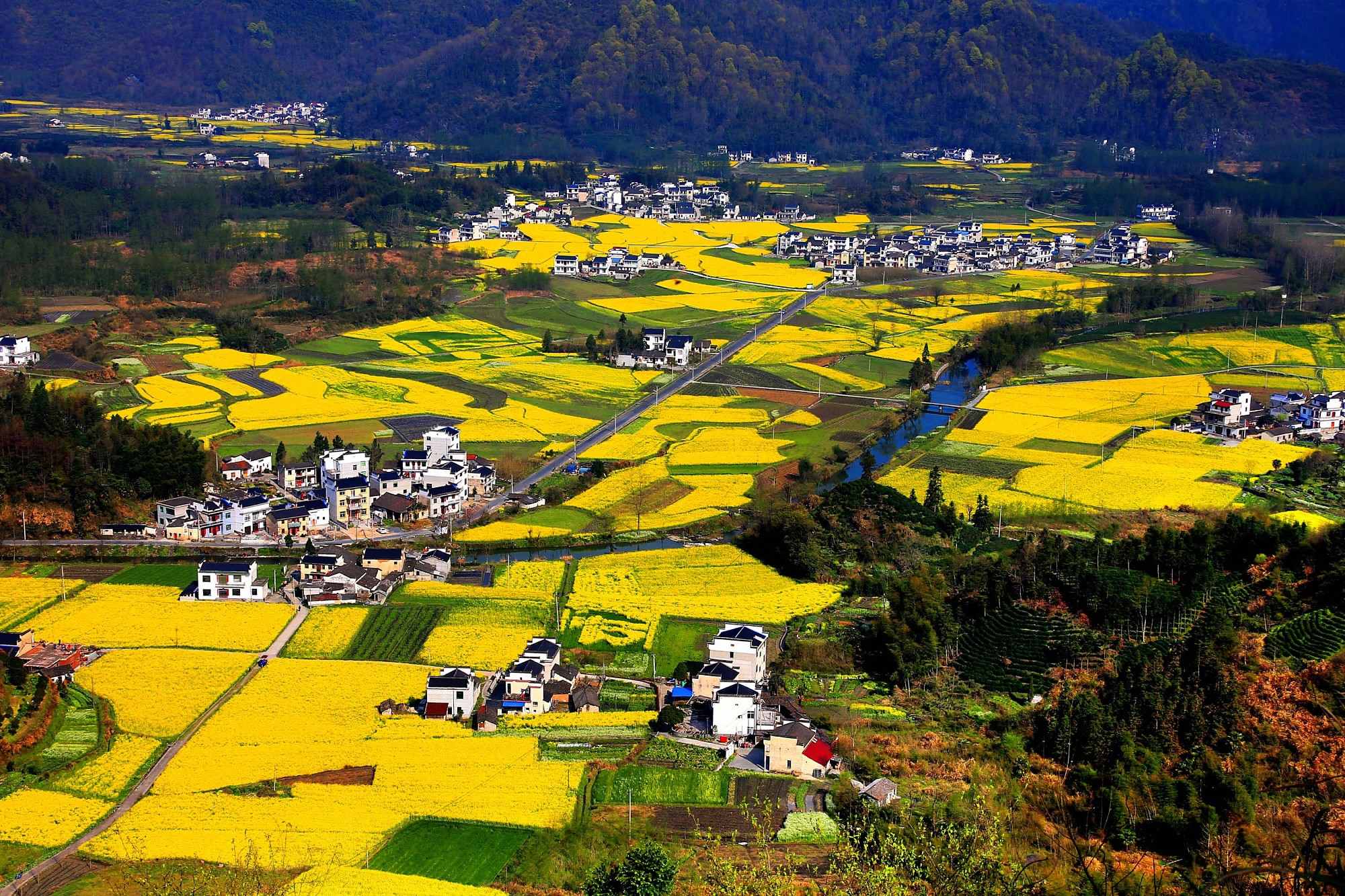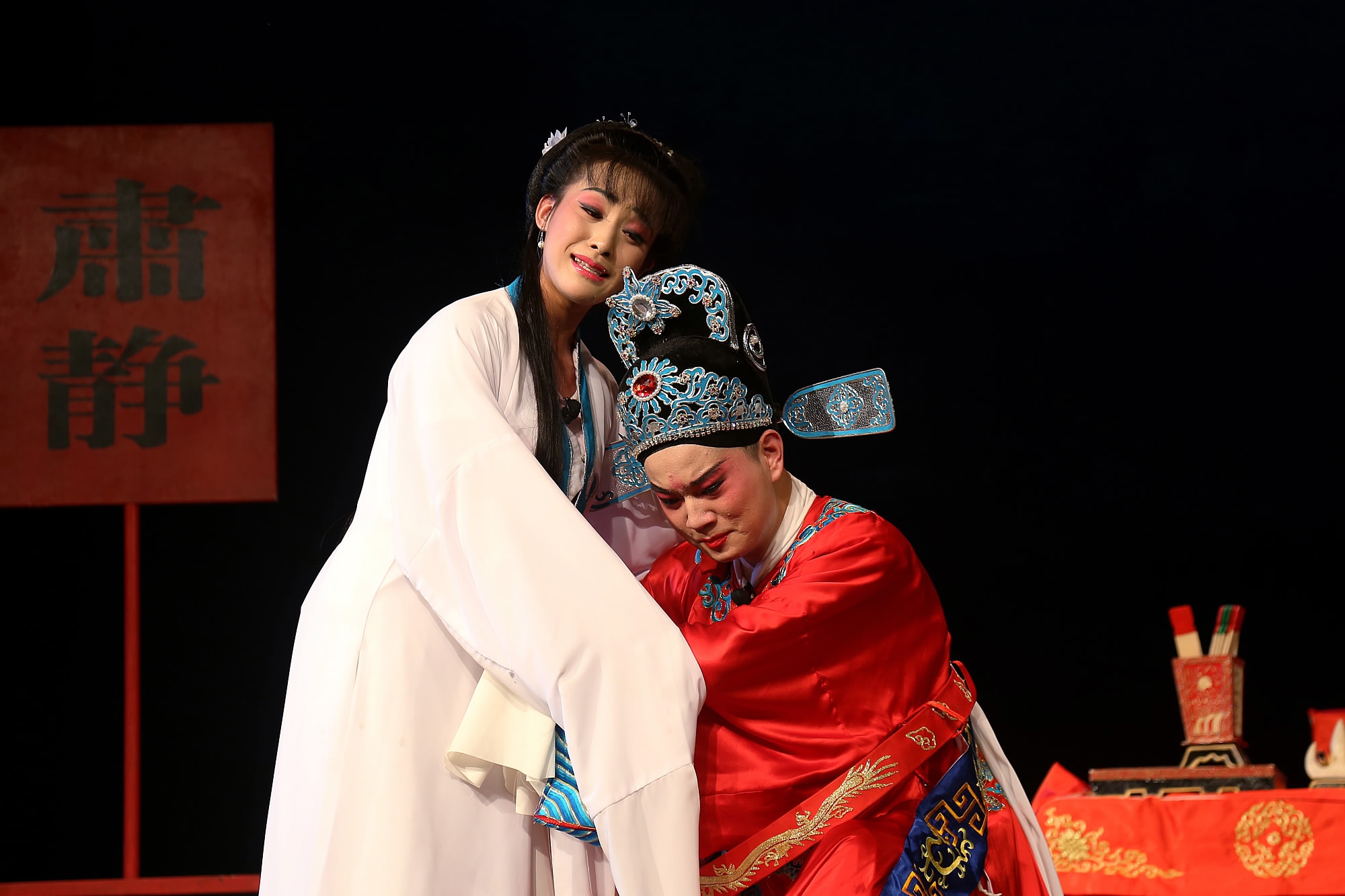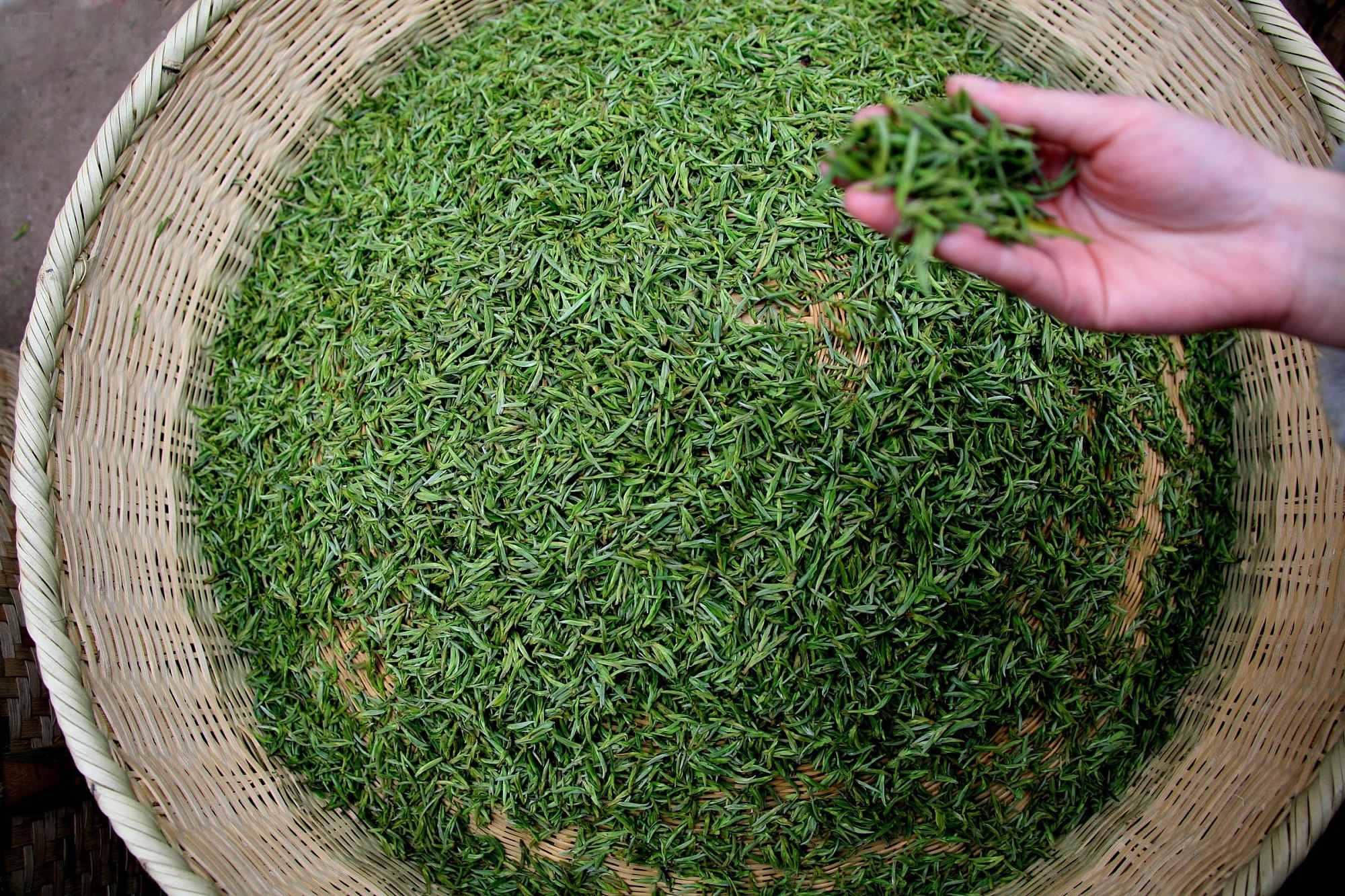
Culture & Sports
18:41, 12-Apr-2017
Foreign Minister Wang Yi on why there's more to Anhui than Huangshan

China’s Foreign Minister Wang Yi on Tuesday afternoon gave a speech to introduce and celebrate Anhui Province, a region in eastern China that has played a prominent and historic role in Chinese culture and commerce, and continues to remain at the forefront of innovation and industry today.
The Blue Hall of the Ministry of Foreign Affairs (MFA) in Beijing, where the ministry usually holds regular press conferences, changed to another style on Tuesday. 500 diplomatic envoys and China-based representatives of over 100 countries and international organizations, representatives from industrial and commercial sectors, Chinese and foreign experts and scholars, and journalists were present at the event that gave the stage to Anhui Province, under the theme of “An Open China: Splendid Anhui Welcoming the World.”

Wang Yi at the event “An open China: Splendid Anhui Welcoming the World” on April 11./Photo by People Daily
Wang Yi at the event “An open China: Splendid Anhui Welcoming the World” on April 11./Photo by People Daily
Beginning in March 2016, the MFA has hosted seven events to introduce China’s provinces and cities to the world.
Wang Yi's speech on Tuesday hailed Anhui as a place which combines a profound culture with continuous innovation.

CFP Photo
CFP Photo
Anhui is best known for its magnificent landscapes. The Huangshan mountain range is famous for its sea of clouds, rock formations and pine trees that have inspired artists, poets and writers for thousands of years.
Wang praised Huangshan, which is unusually both on the UNESCO World Cultural and Natural Heritage List and part of the UNESCO Geopark, a combination seldom seen elsewhere in China or in the rest of the world.
Beyond Huangshan, Anhui’s Mount Jiuhua is one of China’s “Four Sacred Mountains of Buddhism,” while Mount Tianzhu is another well-known peak which provides stunning views of the mountain scenery that is unique to the province.
In addition, Anhui also enjoys a long history and profound culture. It is a place where Taoism, Buddhism and Confucianism complement one another, as well as the birthplace of traditional Chinese Huangmei and Huiju opera.
Well-preserved ancient villages like Hongcun and Xidi are examples of the typical Anhui-style architecture that continue to evoke life during the Ming and Qing Dynasties.

Huangmei Opera./CFP Photo
Huangmei Opera./CFP Photo
In his speech, Wang Yi underlined how “Anhui has traditions in innovation and creativity.” The province is home to Anhui businessmen, whose ancestors were merchants renowned for their economic prowess 400 years ago, traveling between China and Eurasian countries and forming Huishang, a prominent international business group.
Wang also recalled how forty years ago, Xiaogang Village in Fengyang launched the country’s first rural reform. Xiaogang’s reforms made it an agricultural model for other villages nationwide.
“Anhui today continues to lead in innovative reform and science and technology internationally”, said Wang, naming several high-end industries based in the region that have pushed forward voice recognition technology, robotics and quantum science, giving Anhui a competitive edge.
Even today, Anhui is a leader in innovation, standing at the forefront of artificial intelligence, robotics, and quantum telecommunication.

China's first interactive robot "Jia Jia" unveiled in Hefei./ Xinhua Photo
China's first interactive robot "Jia Jia" unveiled in Hefei./ Xinhua Photo
Under the Belt and Road Initiative, Anhui enjoys more prominent regional advantages and is now marching towards a higher level of opening up, entering broader fields of opening up as well as a closer relationship with Asia and the world.
Anhui’s enterprises have set their footsteps in foreign lands, accelerating exchanges in cooperation with other countries and establishing the province as an ideal inland location for opening up.
Foreign Minister Wang Yi particularly “gave a like” for Anhui’s "Four Treasures of the Study." Since ancient times and up to today these four treasures, which all hail from Anhui, have been necessary items in any decent Chinese study: Xuan writing paper, ink calligraphy brushes and traditional ink-sticks and ink-slabs.

CFP Photo
CFP Photo
Abundant with local specialties, Anhui is a major area for tea production. Four of China’s ten most famous teas are from Anhui, including Qimen black tea, which has been exported all over the world.
Wang said that although this occasion was the first time that he had tried Qimen black tea, the drink left him with a lingering fragrance.
As part of the Yangzte River Economic Belt and the Yangzte River Delta City Cluster, Anhui is also one of the most open and innovative areas in China. Wang Yi invited foreign friends and guests to visit and better know the region, saying the province was set to embrace a better future.

SITEMAP
Copyright © 2018 CGTN. Beijing ICP prepared NO.16065310-3
Copyright © 2018 CGTN. Beijing ICP prepared NO.16065310-3